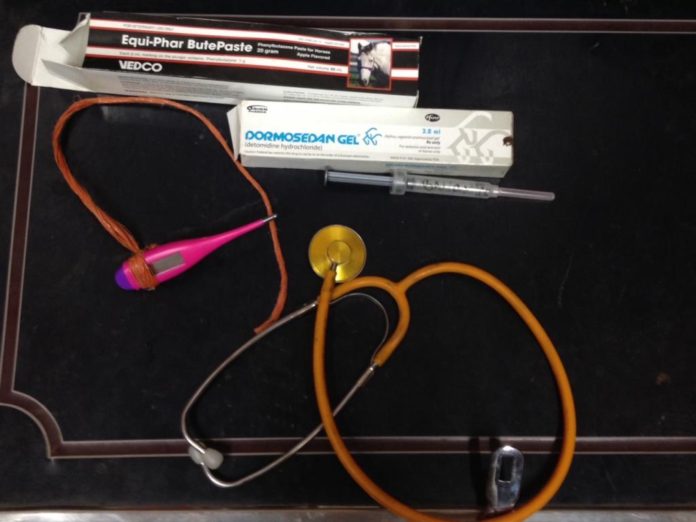In Part 1 of this series on hoof radiographs, I discussed how to get accurately acquired and measurable radiographs for hoof care decisions. In Part 2 of the series, I discussed some things you can look at to get the most out of your accurately acquired hoof radiographs. In this last part of the series, I’m going to show you examples of how assessing the foot in front of you with the benefit of radiographs can greatly enhance your ability to help the horse.
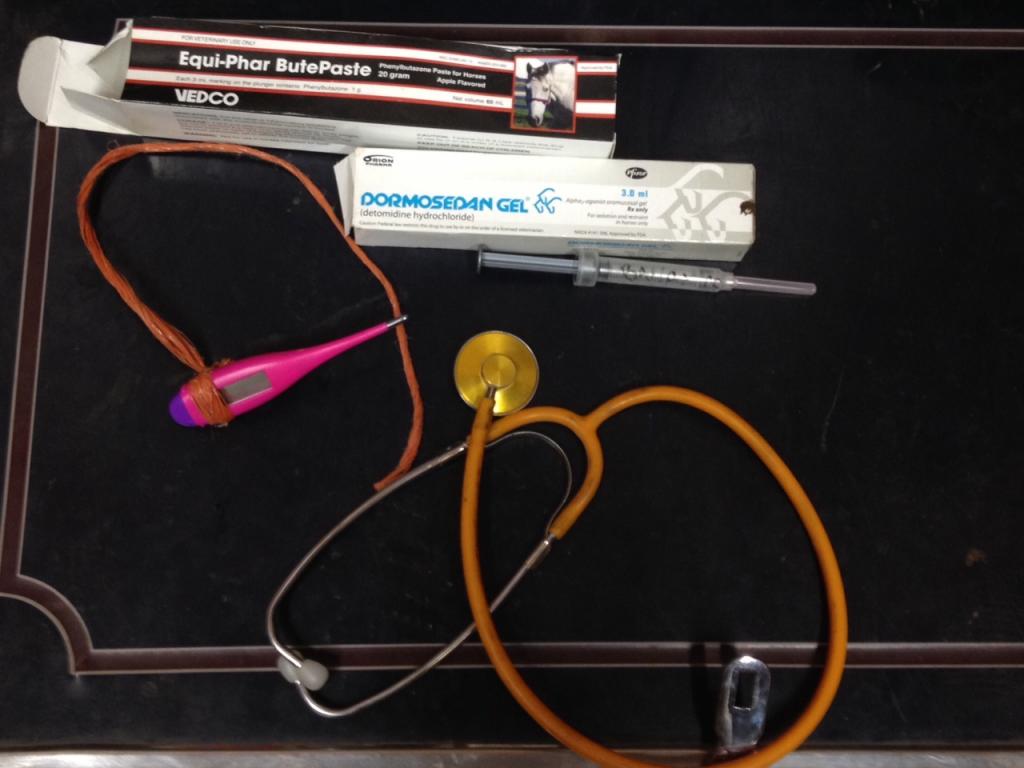
This is a horse who was lame in both front feet with significant hoof capsule distortion when I was called in to help. There are several external characteristics we can use to identify the distortions in this capsule: the steep coronary band angle, shallow dorsal wall angle, under-run heels, pointy heel bulbs, etc all lead us to reliably conclude this is a long toe/low heel foot. Most of us would probably want to shorten the toe, develop heel height, and move the foot print back in some way shape or form.
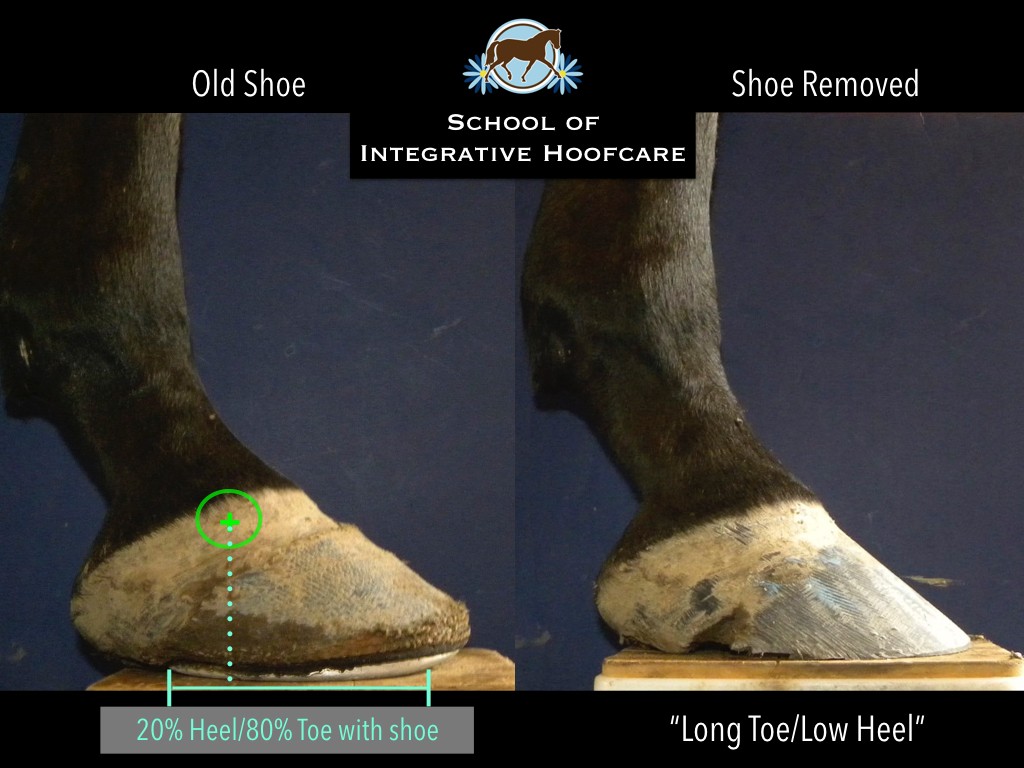
Here is the sole view of this foot. Note the location of the white line marked with the red dotted line. One trim option would be to bring in the length of this foot by applying a hard roll on the wall from heel to heel. That would certainly make this foot more compact and given the right diet, environment and exercise the feet would certainly improve.
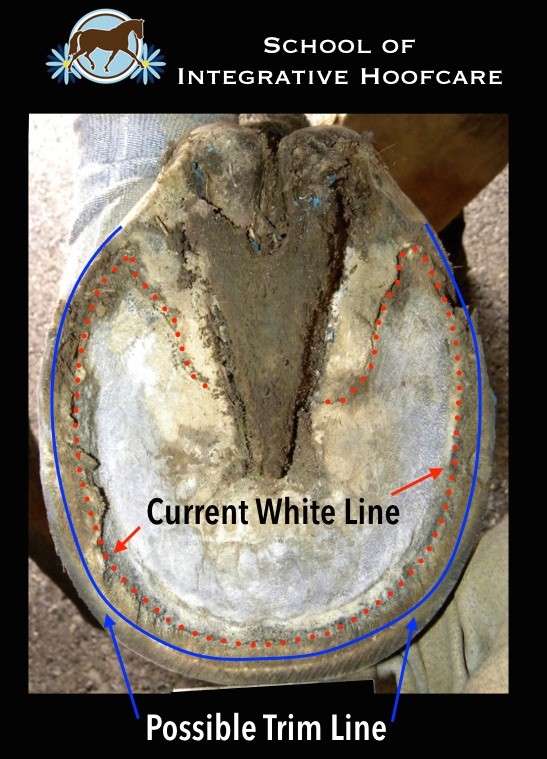
Another option would be to map the sole of this foot. Given the hoof guidelines I like to follow when trimming and shoeing, it would certainly give me more information about how I could get this foot back, but the 50/50 line is in the middle of the sole. We can see that this foot has a long toe, and maybe even a lot of toe, but can the map be right?
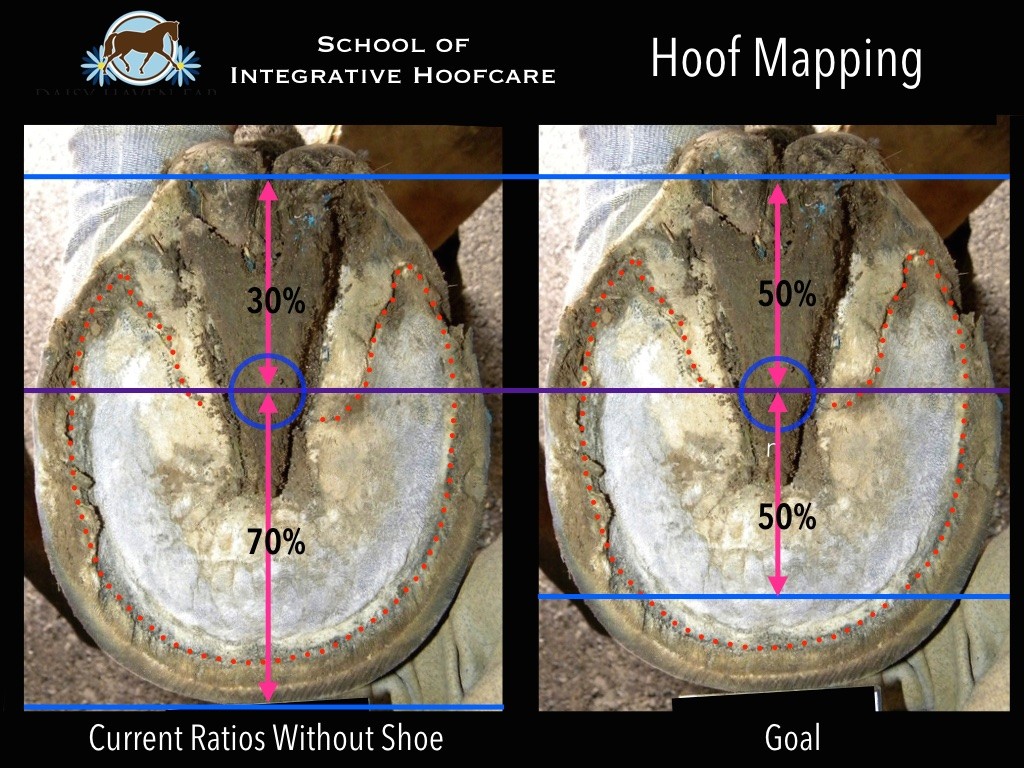
A radiograph in this situation would give us valuable objective information about where the bones and soft tissue are located inside this distorted foot. The radiograph here confirms the long toe/low heels assessment and accuracy of the hoof map, but also gives us specific and measurable information about the foot we have to work with in front of us:

We all have different trim styles, and some of us like to do things faster or slower for the horse and the specific situation in front of us. Because of my experience with rehabilitation and specifically using radiographs as an objective reference, in most instances I like to gain as much ground in my rehabilitation each visit as possible. Given this horse’s situation, and the information the radiographs gave me, here is what I did at the first trim:
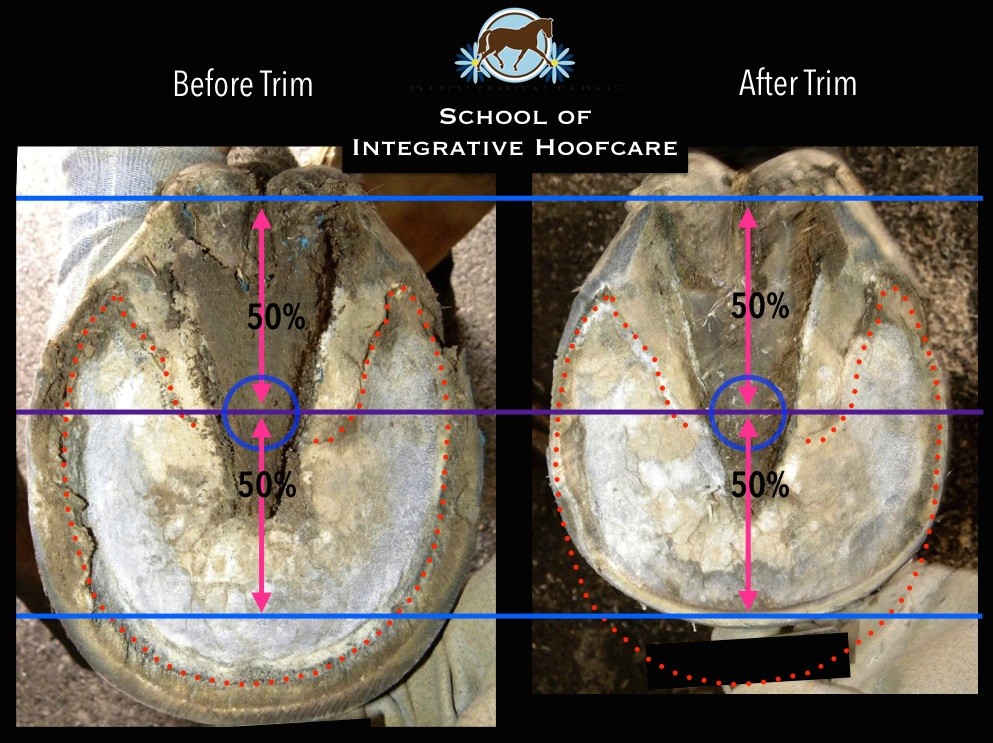
I would not have done this aggressive of a trim without the radiograph to guide me.
Here is the lateral view, showing significant improvements to Hoof-Pastern Axis, Palmar P3 Angle, and the balance around the Center of Rotation being closer to my goal or 50/50. I would apply a hoof boot therapeutically or composite shoe to this foot during the rehabilitation process.
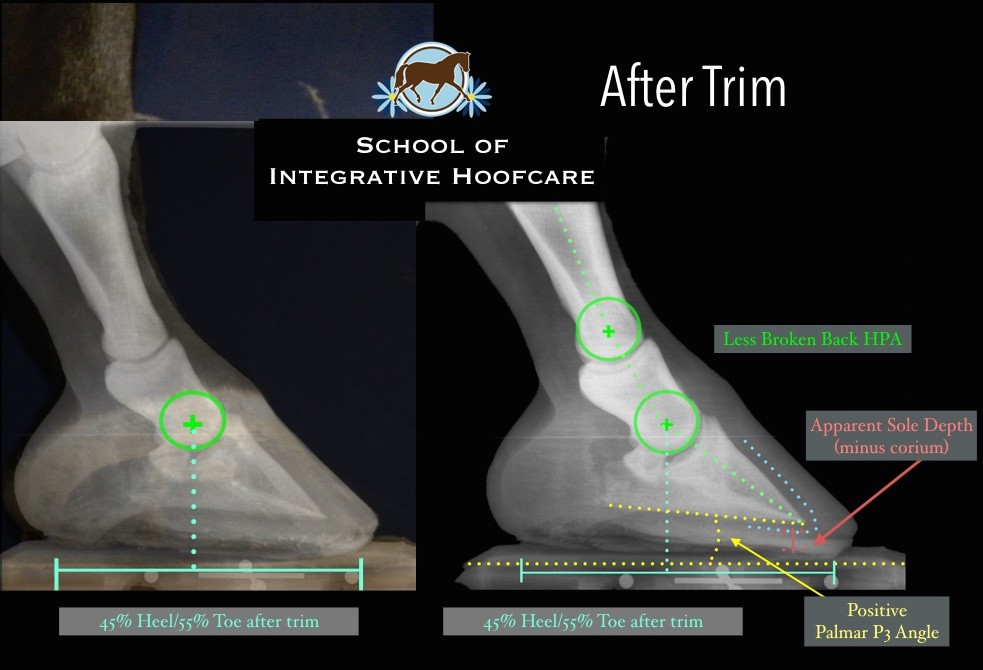
Another example of how accurately acquired hoof radiographs, and specifically Dorso-Palmar (DP) radiographs, can help you in your decision-making for the foot in front of you is this foot here:
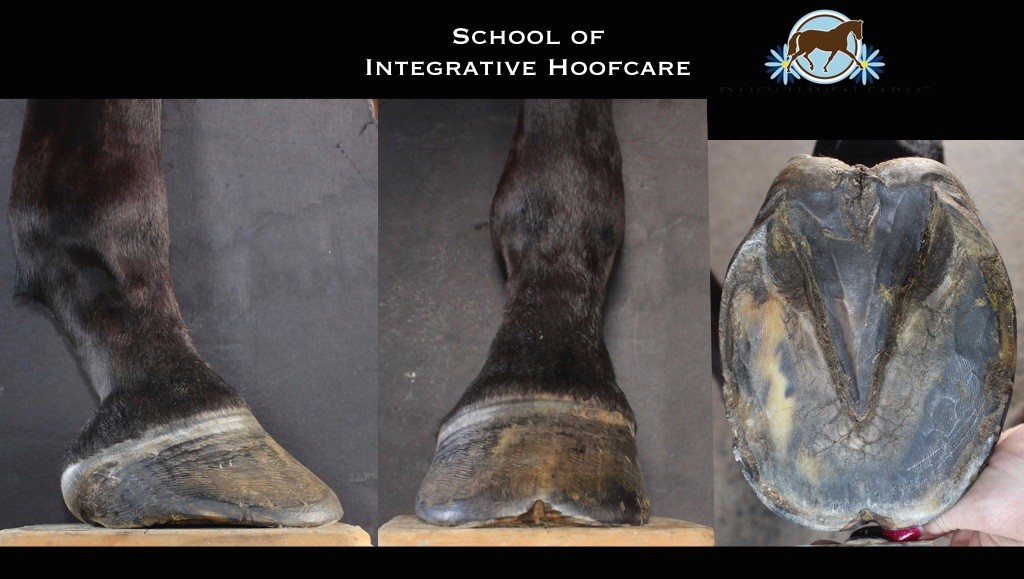
This horse was very lame with digital pulses in both front feet when I was called in to help. Externally he was lacking vertical depth, with low heel angle. What was also interesting about this horse is how crooked his leg and hoof capsule appeared.
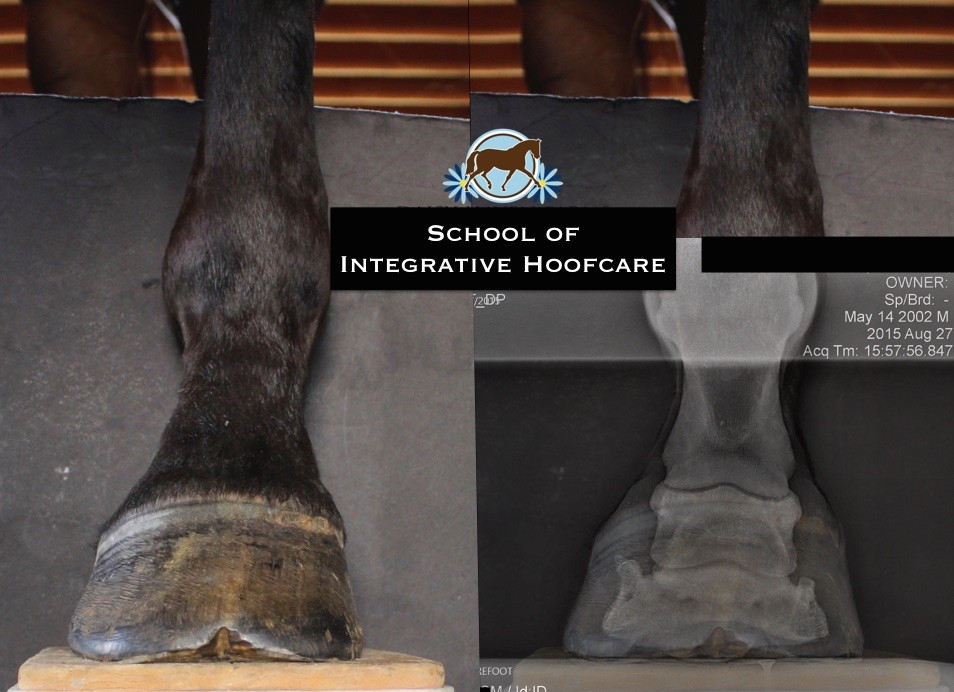
The lateral radiograph confirmed how little foot we really had to work with, which the horse’s pain level and hoof inflammation was certainly telling us. What was also very interesting was the DP radiograph, since it also indicated significant medial lateral hoof imbalances that we could help this horse with at the time.
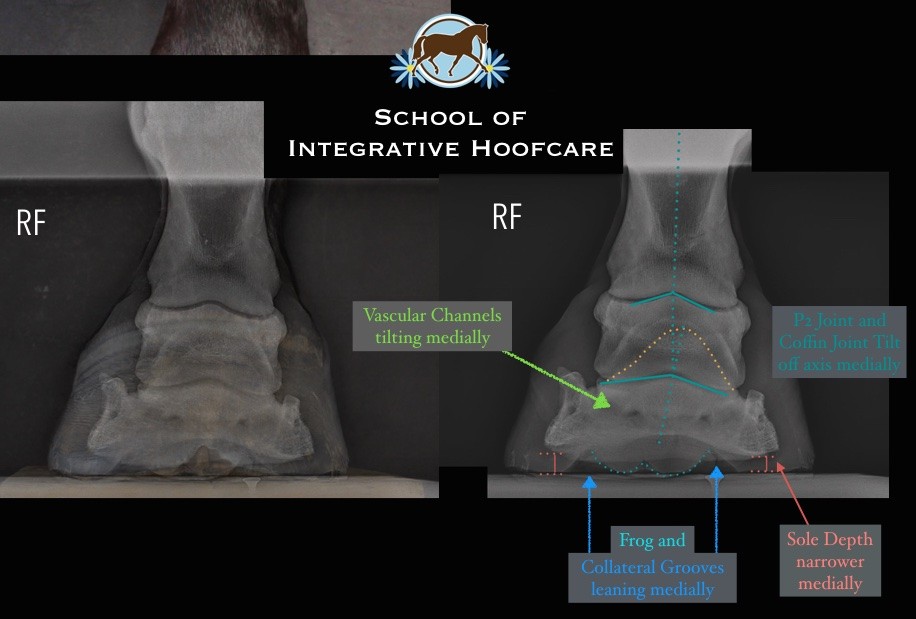
This horse would definitely benefit from composite shoes like the EasyShoe, to facilitate building vertical depth until the horse can grow it. With the added information from the DP x-ray I would also look to build up the medial side of this foot in my shoe and glue. Without the radiograph we might not have been able to make as quantitative a balancing decision.
Working with hoof radiographs can greatly increase your ability for accuracy and effectiveness for the horses you work on. I encourage you to request radiographs on your horses as much as possible. The information you gain is invaluable. For more information on using radiographs in your work, please see www.DaisyHavenFarm.com and www.IntegrativeHoofSchool.com.


